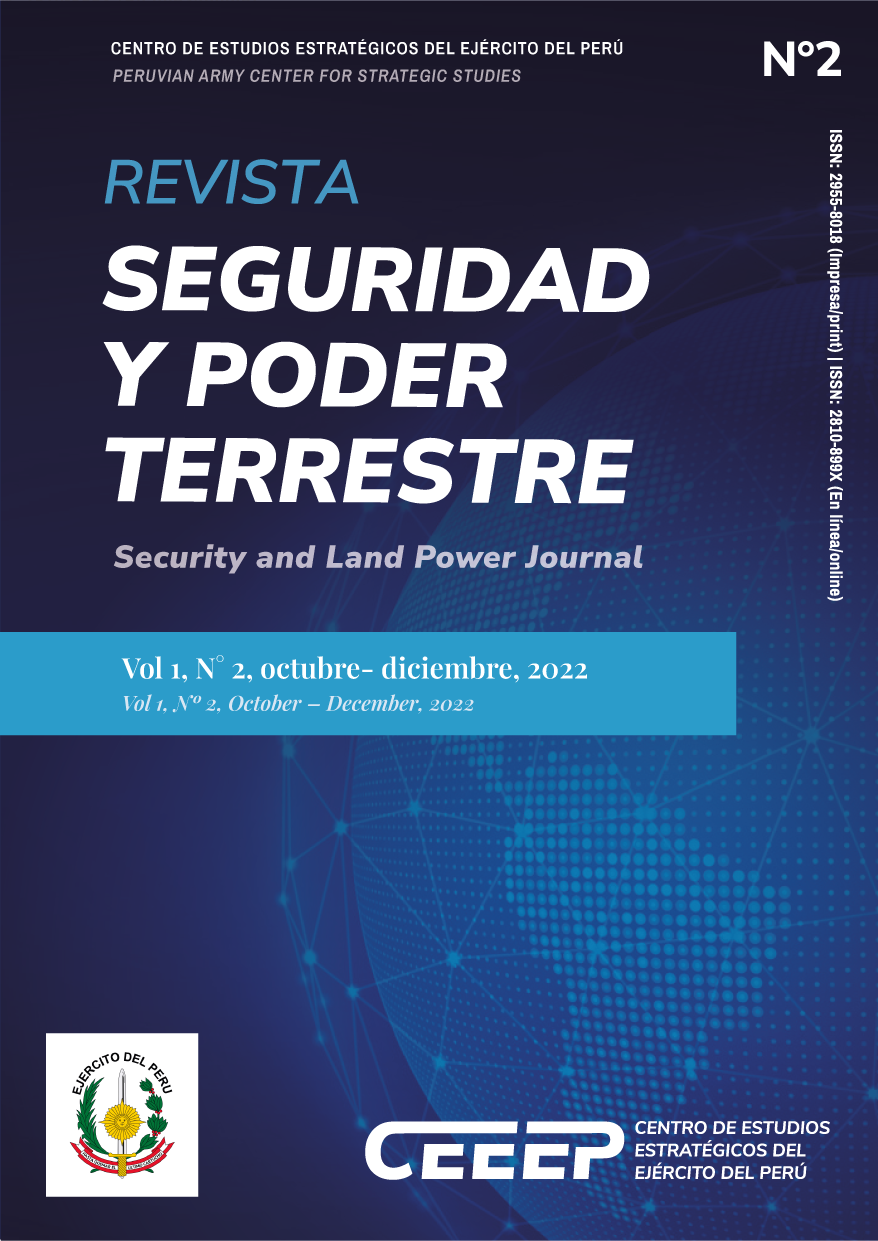Residual Organized Armed Groups and Cross-Border Threats in Alto Putumayo
DOI:
https://doi.org/10.56221/spt.v1i2.15Keywords:
GAOR, Territorial Integrity, National Development, Contemporary ThreatsAbstract
During the last decade, coca leaf cultivation has increased significantly in Colombia, with the residual organized armed groups (grupos armados organizados residuales, GAOR) being the main actors involved in the illicit drug trade in the border area between Peru and Colombia. Since 2016, the GAOR have been considered criminal organizations that not only base their economy on illicit activities, but also violate the human rights of the communities living in that region. In the absence of the Peruvian state, the GAOR have consolidated themselves in the area and their economic activities - to a large extent - are the only alternative for the surrounding population to escape poverty. In this sense, this article analyses the impact of the GAOR on security and national development.
Downloads
Published
Versions
- 2025-04-27 (2)
- 2022-10-10 (1)
Issue
Section
License
Copyright (c) 2022 Security and Land Power Journal

This work is licensed under a Creative Commons Attribution 4.0 International License.





